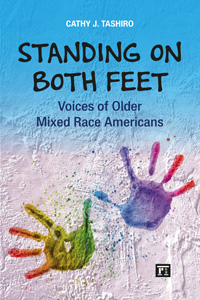
Excerpt from Chapter 2
Mixed Race: It’s a Family Affair
Mixed race is inevitably a family affair, even if both parents were not physically present in the lives of their children. During the times when the parents of the people I interviewed got together, the white parents’ transgression of the color line frequently resulted in drastic disruptions in connections with their families of origin and constant challenges to the legitimacy of their relationships with their spouses and partners of color.
The first question I asked of the people in this book was how their parents got together. Their responses provide a window into life when it was illegal for whites and people defined as not-white to marry. The parents of many of the people I interviewed had to engage in subterfuge, leave their state of residence, and risk imprisonment to “cross the line” of race in order to marry. It is difficult in today’s environment to comprehend what these men and women had to go through just to be together. Yet, such events took place only a generation or two ago. In general, the hardships these parents faced did not end with their marriages. Frequently, they and their families endured discrimination in employment and housing, harassment from the police, ostracism by the white family of origin, and sometimes violence. Even after marriage, the legitimacy of their union could be challenged. In addition, a persistent theme runs through these stories involving challenge and denial of familial blood ties between parents and children. Yet, the majority of the families of the people I interviewed stayed together, which seems extraordinary given the obstacles they faced.
Are We Family?
Disbelief in familial relationships by others, denial, and even abandonment haunt the stories of some of the people I interviewed. Sometimes there was no contact between a white parent and mixed child because of the stigma associated with the relationship. Brian Mitchell, born in 1939 in a small western town to an unmarried white mother and a black father with Native American ancestry, never had a relationship with his white mother. To protect his mother’s reputation, Brian’s race at birth was listed as “white.” His father left town, and when Brian was an infant, he was given to a local black family to raise. Although he grew up living less than a mile from his biological mother, Brian said, “she never acknowledged me—she never claimed, or nothing was ever said, that she was my mother. And still hasn’t today.”
